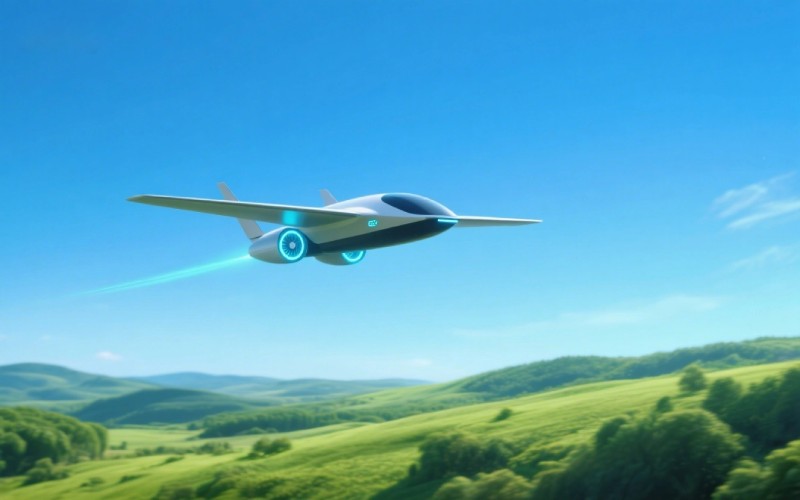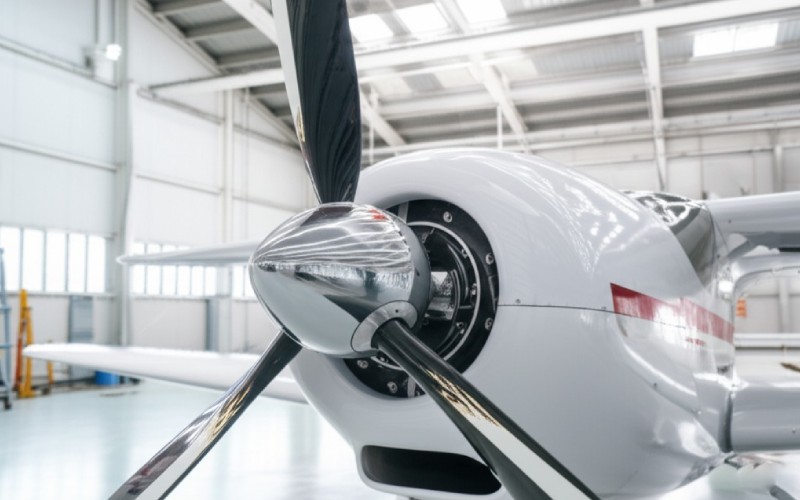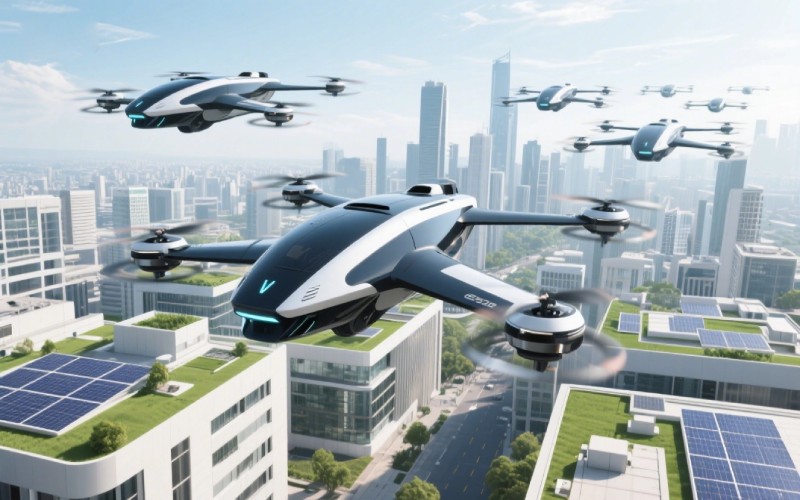Let Sino's Lamination Stacks Empower Your Project!
To speed up your project, you can label Lamination Stacks with details such as tolerance, material, surface finish, whether or not oxidized insulation is required, quantity, and more.

The electric aircraft isn’t just about a new kind of airplane; it’s about a complete change in the future of aviation. The excitement is real, and for a good reason. The benefits of electric aircraft are ready to change our skies, our cities, and our effect on the environment. It’s not just about a quieter flight; it’s about a cleaner, better, and finally, easier way to travel by air. If you want to know what this big change really means, and you want to get past the flashy news, this is the right article for you. I will share my own experiences and the real data and records to show you why switching to electric aviation is one of the most thrilling technology steps forward today.
Basically, an electric aircraft replaces the usual internal combustion engines with a smart electric propulsion system. It’s like the difference between a gas car and an electric car. The main idea is the same, but how it’s built is very different. Instead of burning fossil fuel to move forward, these amazing new planes use an electric motor that gets its power from a battery. This simple change in how they are built is the source of almost all the benefits of electric aircraft.
The electric motors are much simpler and more dependable than the old engines that use a lot of jet fuel. This simplicity leads to a whole list of good things that we’ll look at. An electric motor works with fewer moving parts, which has a big effect on keeping it working and making it trustworthy. Also, the freedom to design the plane differently with an electric propulsion system is a huge deal. Designers are no longer stuck with having to place big, heavy aircraft engines in certain spots. This allows for new designs that used to be only in stories. This new way of designing planes is a major step towards a future for the aviation industry that is better for the planet and uses resources wisely.
The electric propulsion system is the most important part of the electric aircraft, and it’s a groundbreaking technology. Unlike a regular aviation gasoline engine and fuel tank, which is a complicated mix of moving parts and burning fuel, an electric motor is a perfect example of doing more with less. This isn’t just about using less fuel; it’s about completely rethinking what a propulsion system can do. Changing to electric propulsion is a big jump ahead in our search for cleaner aviation that can last.
This change makes it possible to create designs that couldn’t be made before. For example, “distributed electric propulsion” means putting many small electric motors all over the plane’s body. This makes the plane safer because there are backups, and it allows for totally new shapes that fly better. If one motor stops working, others can take over. That kind of safety is much harder to get with one big internal combustion engine in the middle. This new way of doing things is especially important for the new area of urban air mobility, where being safe and quiet is most important.

Let’s discuss the biggest of the benefits of electric: the good things for the environment. The clearest one is getting rid of exhaust pollution. An electric aircraft has zero emission during flight, which is a huge step in making the carbon footprint of aviation smaller. When the electricity used to charge the battery comes from clean energy sources, we can have a truly emission-free electric propulsion system. A study from Chalmers University of Technology showed that small electric aircraft can have a notably lower climate impact—up to 60% less—than the planes they replace that use fossil fuels.
But to really understand it, we need to look at the whole picture, using a life cycle assessment. Making lithium-ion batteries does harm the environment, especially when it comes to the rare minerals needed. The battery consumes a lot of energy and resources to make. But even with that, the climate impact is lower for the electric airplane and the fossil-fuel one over its whole life. Studies show that after about 1,000 flight hours, the electric aircraft becomes better for the climate than the fossil-fuel aircraft. Since it’s expected to fly for over 4,000 hours, that’s a very positive result. The main point is that after the initial impact of making it is balanced out, every flight after that is cleaner. The longer the electric aircraft is in a longer time view, the more it is preferable than the fossil-fuelled one.
In my experience, when a new technology is good for both the environment and for business, people start using it much faster. The money saved by running electric aircraft is very large. One of the biggest savings is on fuel. The cost of electricity per flight hour is just a small part of what it costs to fuel a regular aircraft. One report said a 100-mile flight costing $400 in regular fuel would only cost between $8 and $12 in electricity.
Repair costs are also much lower. An electric motor has many fewer moving parts than a complex internal combustion engine, which means they need to be fixed 30-50% less often. This means the planes spend less time on the ground and cost less for airlines to run. For short flights, these savings can be a huge advantage, making routes that didn’t make money before possible and connecting more regions. A study on local routes found that the total running cost for an electric aircraft is 15% to 22% cheaper than for a conventional aircraft.
| Cost Area | Conventional Aircraft | Electric Aircraft | Possible Savings |
|---|---|---|---|
| Fuel/Energy | High and changes a lot (jet fuel) | Low and steady (electricity) | Up to 90% |
| Repairs | High (complex engines) | Much Lower (simple motors) | 30-50% |
| Pollution | High (carbon and other dirty air) | Zero where it’s used | 100% (during flight) |
| Noise | Loud | Much Quieter | 66% quieter during takeoff/landing |

When we talk about the performance of electric aircraft, there are some trade-offs, especially with today’s battery technologies. The amount of energy that today’s lithium-ion batteries can hold is less than jet fuel, which means a battery-electric aircraft can’t fly as far or carry as much. This is why electric aviation is first focusing on shorter flights and smaller planes. You won’t be flying across the ocean on an all-electric jumbo jet anytime soon.
But for the jobs they are made for, their performance is great. The immediate power from an electric motor gives them excellent takeoff and climbing ability. The quietness of the electric propulsion system is another big performance plus, letting them fly closer to city areas without the noise problems of a normal airplane. Also, the design freedom I talked about before allows for better shapes, which can make them more efficient and easier to fly. The basic structure as the electric aircraft of today is only the start; future designs will probably be even better.
The battery is, for sure, the most important part of the electric aviation change. The progress of battery technologies is directly connected to how much electric flight can grow. The lithium-ion batteries we have now have gotten much better at storing energy, but they still have a long way to go to match the energy in fossil fuel. The whole aviation world is watching the development of batteries very closely.
The problems are big. Batteries are heavy, and in aviation, weight is the most important thing. A key measure is energy storage density—how much energy can be held in a certain amount of weight. As this gets better, the distance and carrying ability of electric aircraft will also get better. A lot of science is focused on new battery technologies, like solid-state batteries, that could double the energy storage capacity. Making the lifetime of the lithium-ion batteries longer is also very important to make the costs work and to be better for the environment by replacing them less often. The company that makes the plane in a recent study has already found a way to make the life of the batteries as much as three times longer. The constant development of lithium-ion batteries that can improve how they work is happening, and there are also new battery technologies that could be developed and become applicable to electric aircraft.
One of the most thrilling uses of electric propulsion is the electric vertical takeoff and landing (eVTOL) aircraft. These are basically flying taxis, made to fly in and around cities. They could offer a new way of getting around that could completely change how we move in city areas. The eVTOL is a perfect example of the design freedom that electric propulsion gives. They are quieter, safer, and more efficient than helicopters, which makes them perfect for urban air travel.
The benefits of electric power for eVTOL aircraft are many. Being quiet is necessary for people to accept them in crowded places. Using many propellers, which is a type of spread-out electric propulsion, makes them safer and easier to control. The aim of urban air mobility is to give a faster, cleaner, and more connected way to travel inside our cities, and eVTOL technology, using electricity, is the way to make that future happen. The growth of the eVTOL market is a big reason for new ideas in electric aviation.
I think it’s important to be realistic, and we need to admit there are problems ahead. The biggest problem, as I’ve said, is energy storage. The energy density of the battery needs to keep getting better to make longer electric flight possible. This is a very big engineering problem that will need new discoveries in science. The need for good charging stations at airports is another big thing to think about.
There is also the problem of the trade-off regarding mineral resource scarcity. The materials needed for batteries, like lithium, are limited, and getting them from the ground hurts the environment. This is a very important area of study, with work being done to create new battery technologies that use more common materials and to make recycling better. The lifetime of the lithium-ion batteries would need to be about twice as long for the mineral resource scarcity to be about the same as a plane using fossil fuels. It’s also key to know that right now, the electric aircraft is comparatively worse for the climate when it’s brand new because making the battery uses a lot of energy.
When you look at it from a longer time perspective, the argument for the electric aircraft becomes very strong. The first cost of a new electric aircraft and making its battery are high. But over the thousands of hours a plane flies in its life, the good things add up. The point where the climate impact is lower than a fossil-powered plane is reached pretty early in its life, especially when green energy is used to charge it.
Besides the climate pluses, the lower running costs will keep adding up over time, giving a big money advantage. The quieter flying will lead to more people being okay with them and maybe fewer rules about when they can fly at airports. While there are problems at the start, especially with the battery, the future path for electric aviation is one of more efficiency, lower costs, and a much smaller environmental footprint. The development of batteries will only help improve both climate impacts and mineral resource scarcity as time goes on.
I am very hopeful about the future of flight with electric aviation. We are at the start of a new time in the aviation industry. While the first uses will be for shorter trips and smaller planes, the technological advancements are happening very quickly. We will see the skies slowly become more electric, starting with small commuter planes and urban air mobility vehicles. Eventually, this will grow to bigger planes as battery technologies get better.
This is not just about changing one kind of propulsion system for another; it’s about making a travel system that is more lasting, efficient, and open to everyone. The benefits of electric aircraft will be seen in many areas, from cutting down on global warming from greenhouse gas emissions to lessening matter formation from particle emissions. The path to a fully electric aviation future will be long and hard, but it’s a path we need to follow. The possible good things—for our planet, our money, and our way of life—are just too important to pass up.